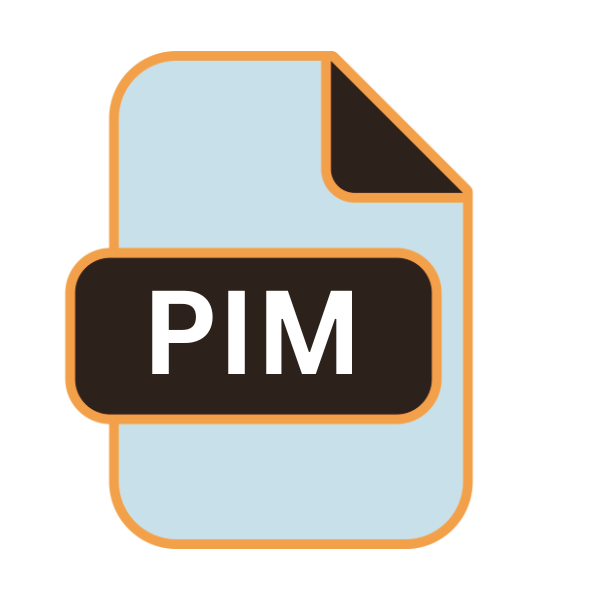.PIM File Extension

Pro Tools Controller Plug-in Mappings File
| Developer | Avid Technology |
| Popularity | |
| Category | Plugin Files |
| Format | .PIM |
| Cross Platform | Update Soon |
What is an PIM file?
The .PIM file extension is associated with Pro Tools, a digital audio workstation developed and marketed by Avid Technology.
These files serve as mappings for controllers within Pro Tools, facilitating the interaction between hardware control surfaces and the software’s functions.
Essentially, .PIM files define how the controls on external devices correspond to actions within Pro Tools, allowing for intuitive and efficient manipulation of audio parameters.
More Information.
The .PIM file extension was introduced as a solution for configuring control surfaces within Pro Tools. Emerging alongside the evolution of MIDI technology, .PIM files aimed to standardize mappings between hardware controllers and software functions.
Initially developed by Avid Technology for its control surfaces, .PIM files later expanded to accommodate third-party devices, facilitating intuitive and efficient manipulation of audio parameters within the Pro Tools digital audio workstation.
Origin Of This File.
The concept of mapping files within Pro Tools traces back to the evolution of MIDI (Musical Instrument Digital Interface) technology, which enabled communication between digital musical instruments and computers.
As Pro Tools expanded its capabilities beyond MIDI to encompass control surfaces for mixing and editing, the need arose for a standardized method of defining these mappings.
Thus, the .PIM file extension was born, initially serving as a means to configure control surfaces manufactured by Avid but later extending to accommodate third-party controllers as well.
File Structure Technical Specification.
.PIM files are typically stored in a human-readable text format, often utilizing XML (eXtensible Markup Language) or a similar structured data format.
Within these files, each entry corresponds to a specific control on the hardware surface and its associated action within Pro Tools.
This includes parameters such as fader levels, pan positions, transport controls, and plugin parameters. Additionally, .PIM files may include metadata describing the compatible Pro Tools version and controller model.
How to Convert the File?
Converting .PIM files don’t involve changing their format but rather manipulating their content. Here’s how you can handle .PIM files:
- Editing: .PIM files are typically plain text files, so you can edit them directly using any text editor. Simply locate the .PIM file, open it with a text editor like Notepad (Windows), TextEdit (Mac), or any other preferred text editor, and make the necessary changes.
- Renaming: If you want to convert the file to another format or change its extension, you can simply rename it. However, ensure that the content and structure of the file remain compatible with Pro Tools.
- Compatibility: While .PIM files are primarily associated with Pro Tools, you may need to ensure compatibility if you’re using them with other software or platforms. In such cases, you might need to modify the content of the file to adhere to the requirements of the target software or platform.
Advantages And Disadvantages.
Advantage:
- Customization: .PIM files allow users to tailor the functionality of their control surfaces to suit their workflow preferences, enhancing efficiency and creativity.
- Interoperability: By providing a standardized format for controller mappings, .PIM files ensure compatibility across different versions of Pro Tools and a wide range of hardware devices.
- Community Support: The availability of .PIM files created by users and manufacturers foster a collaborative ecosystem where users can share and benefit from optimized control configurations.
Disadvantage:
- Complexity: Creating or modifying .PIM files require a certain level of technical expertise, particularly regarding the mapping of controller inputs to specific software actions.
- Compatibility Limitations: While .PIM files offer broad compatibility with Pro Tools and various hardware controllers, there may be instances where certain features or functions are not fully supported.
- Maintenance Overhead: As Pro Tools evolves with each new version, .PIM files may require updates to remain fully compatible, potentially necessitating ongoing maintenance efforts from users.
How to Open PIM?
Open In Windows
- Locate the .PIM file on your Windows system.
- Right-click on the file and select “Open With.”
- Choose a text editor such as Notepad or Notepad++ to view and edit the contents of the .PIM file.
Open In Linux
- Access the .PIM file using your preferred file manager or command-line interface.
- Utilize a text editor compatible with Linux, such as Vim or GNU Emacs, to open and modify the .PIM file.
Open In MAC
- Navigate to the .PIM file using Finder on your Mac.
- Double-click the file to open it in TextEdit or another text editor available on macOS.
Open In Android
- Transfer the .PIM file to your Android device using a file transfer method such as USB, email, or cloud storage.
- Install a text editor app from the Google Play Store.
- Use the text editor to open and edit the .PIM file on your Android device.
Open In IOS
- Transfer the .PIM file to your iOS device via AirDrop, email, or cloud storage.
- Install a text editor app from the App Store.
- Use the text editor to open and edit the .PIM file on your iOS device.
Open in Others
For other operating systems, follow similar principles as outlined above, ensuring compatibility with a text editor capable of handling the .PIM file’s format.













